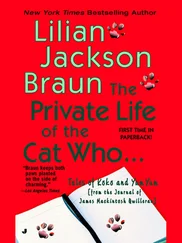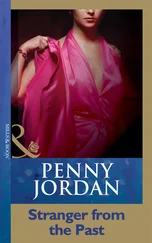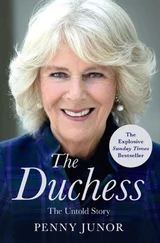You trod carefully as you would with a minister or Prime Minister, and probably more carefully because it is an intensely personal role. Generally if you are in public life you can console yourself that if you’re being criticized, it’s your official persona that’s being criticized. But it’s very difficult for the Royal Family because that boundary line between being a private and public individual is blurred for them. One of the things I took away from my time at the Palace was a feeling that there needed to be a clearer distinction between the two. I think they’ve learnt to protect themselves from taking the criticism personally to some extent, but only to some extent.
Criticism was at its fiercest, of course, in the days after Diana’s death, and that was the second major impetus for change. By the end of the week, when the family had finally come back to London and the Queen’s broadcast had showed the country that its sovereign was back in the driving seat, no one at Buckingham Palace was in any doubt that the future had been on a knife edge. The Queen pulled it off; catastrophe was averted but it could easily have gone the other way. No one had any illusions about that, and they realized that change in the way the Queen’s programme was organized was now a priority.
First they mapped out how the Queen currently spent her time on official visits; how many organizations in the private sector she went to compared to those in the public sector, what parts of the country she visited; when she went to schools, how many of them were private, how many state; within the private sector, how often did she go to manufacturing companies compared with service companies. And they mapped it against the current structure of society in the economy and discovered, for example, that she was doing a disproportionate amount in the public sector for the number of people employed in it. When she did pay visits to the private sector she tended to visit manufacturers rather than companies in the service industry because it was easier to devise a visit for her when there was something specific being made that she could look at. So even though the service industry accounts for 80 per cent of the private sector she didn’t go there. But the reason she tended to go to more public schools than state schools, they found, was simply because she received more invitations from public schools.
‘What we tried to do was get the maps a bit more aligned, which wasn’t difficult once you tried, and I think she found she was visiting rather fresher places, that were fun.’ She started going to popular, touristy kinds of places, like a Center-Parcs, and an aquarium in Liverpool, an example of new investment in that part of the country. In London, where she had only ever done ceremonial events in the past, the Queen spent a whole day visiting the City of London; she had lunch at the Financial Times , visited an investment bank, a venture capital company, sat in on a Monetary Policy Committee at the Bank of England, bought a copy of the Evening Standard from a vendor outside Holborn underground station and met messengers biking documents all round the City; everyday experiences for most people, all new for the Queen. She spent another day in theatre-land, a huge source of tourist income, and among other things watched a rehearsal of the musical Oklahoma! , and visited the Almeida Theatre in Islington. They became known as ‘theme days’ and were as relaxed and informal as possible. On other days, the Queen has toured television studios and seen something of the world of broadcasting; she dipped into publishing when she visited Bloomsbury and met the Harry Potter author, J. K. Rowling; and last year the entire Firm (this was a first) spent the day visiting tourist attractions all over the country, each member of the family in a different region, culminating in a big reception at Buckingham Palace in the evening for leading lights in the tourist industry.
I was with the Queen on that day and I never cease to be amazed by how very informal she is when she is out and about meeting people. Security is tight but it’s low-key and unobtrusive and in no way puts up a barrier between the sovereign and her people. She doesn’t put on any great show, doesn’t keep a grin on her face in the way that showbiz personalities do when they meet their public. She smiles when something amuses her or if someone hands her something particularly pleasing but her face is often in repose – and therefore quite glum, even when the cameras are on her.
Tourism is Britain’s sixth most important industry. Visit-Britain (formerly the British Tourist Board), which markets the country abroad, estimates that there are 2.1 million jobs in the industry – 7 per cent of all people in employment – and the monarchy, with its palaces, history and pageantry, is one of the principal draws. The top five royal attractions in the country – the Tower of London, Windsor Castle, Hampton Court Palace, Buckingham Palace and the Palace of Holyroodhouse – account for more than four million visits each year. But they also go in their hundreds of thousands to the decommissioned Royal Yacht Britannia berthed at Leith in Edinburgh, to Sandringham, KP, Balmoral, and, more recently, Clarence House; and to watch the annual Trooping the Colour ceremony. The biggest free visitor attraction in London is the Changing of the Guard which happens every morning on the forecourt of Buckingham Palace at 11.00 a.m. and lasts for half an hour. The Guard is mounted by the two regiments of the Household Cavalry – the Life Guards and the Blues and Royals – each of which provides one squadron for a special ceremonial unit in London, which is housed in Hyde Park Barracks with more than one hundred horses, and men who do a two- or three-year stint before returning to their operational units. The man in charge is Major General Sebastian Roberts who sits at the Duke of Wellington’s old desk in the aptly named Wellington Barracks with history all around and the awesome task of ensuring that the military aspect of state ceremonials goes according to plan.
Buckingham Palace is not just a magnet for tourists. It is a rallying point where people instinctively go when there’s a problem or a cause for celebration – either personal or national. When in 1982 a schizophrenic named Michael Fagan had family problems, it was the Queen he wanted to talk to. ‘I was under a lot of stress,’ he said, ‘and just wanted to talk to Her Majesty about what I was going through.’ So he broke into the Palace, found his way to her bedroom and she awoke to discover him sitting on her bed with a broken ashtray in one hand and blood pouring from the other – and, incidentally, needed to make two calls to the police switchboard within the Palace before anyone came to her rescue. When in 2004 a divorced man wanted visiting rights with his children, he dressed up as Batman and scaled the front of Buckingham Palace to stage a protest on a ledge and refused to come down for five hours. He caused a major security alert and the Metropolitan Police commissioner warned that the next time anyone tried a similar stunt they might very well be shot. (The mother of the interloper’s third set of children, meanwhile, walked out on him, saying that he spent twice as much time demonstrating as he ever spent with their children and she’d had it; but that’s not the point. The point is that he made his protest at Buckingham Palace.)
Those of her subjects who don’t drop in personally – and the Queen prefers it if they don’t – tend to write to her. She gets about three hundred letters a day: some of them to do with political matters, some wanting help in solving a local problem such as housing or hospitals – or the difficulty for divorced fathers in seeing their children – and some are straightforward fan letters (and a few abusive), but others are also highly personal, just as Michael Fagan’s conversation was personal.
Читать дальше












